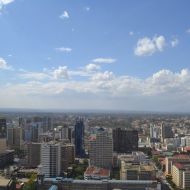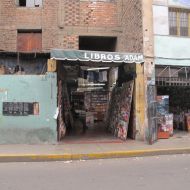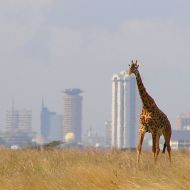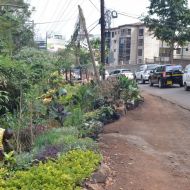From Crime Ridden to People Powered, Looking at Nairobi in 30 Years
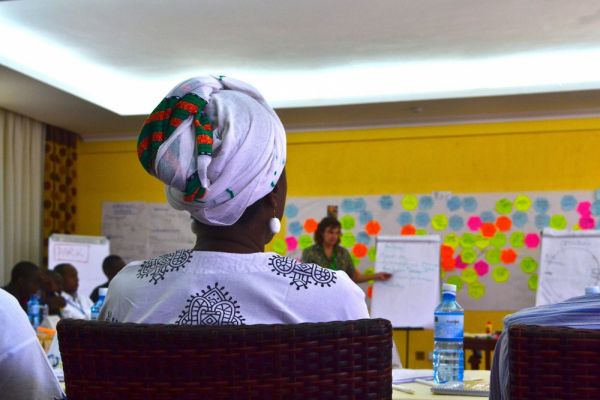
Participants discussed the different ways Nairobi’s future could play out, homing in on four scenarios. Photo credit: Sam Sturgis
The Rockefeller Foundation’s Informal City Dialogues project recently completed its first series of workshops in all six of the cities participating. In these initial workshops, attendees were asked to participate in developing “futures” for their city. Please click here to learn more about the process, and find out what will take place in upcoming workshops.
Welcome to Vulture City.
Gang activity is rampant. Shameless inequality and the failure of law and order have left the city’s unstable social structures teetering on the brink of collapse. The cost of living is skyrocketing nearly as fast as the economy is falling to pieces. Meanwhile, exploitation by opportunistic cartels has left informal workers short on innovation as they struggle to simply subsist on a daily basis.
“As soon as you get the opportunity to leave, you get out,” grimly explains the presenter.
Could this be Nairobi in 2040? Over the course of three days, 27 participants – from government urban-planning officials to entrepreneurs to theater performers working with disaffected youth – attempted to paint a precise picture in response to the questions, “How will Nairobi look in the year 2040? And how will the informal sectors adapt to such a rapidly changing environment?”
Propelled by the boundless energy of Tanja Hichert from South Africa’s Institute of Futures Research, the Scenarios Building Workshop was hosted by The Rockefeller Foundation, Forum for the Future and the Nairobi-based Institute of Economic Affairs (IEA), and concluded by presenting four possible scenarios for Nairobi’s future and its ever-important informal sector.
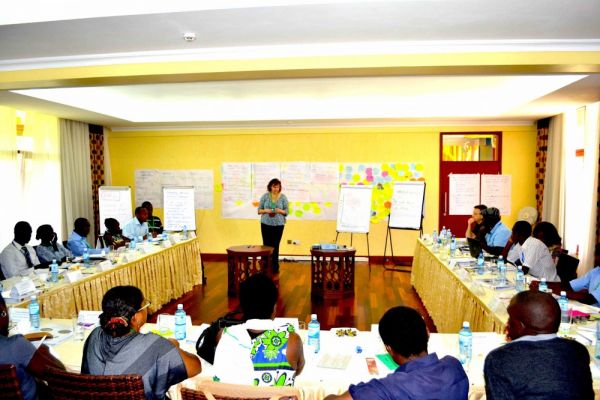
Tanja Hitchert kept the workshop’s twenty-five participants closely engaged during the three-day workshop. Photo credit: Sam Sturgis
If residents become disaffected by their city’s slow progress, and the government remains unable to adequately address the needs of citizens, one workshop group envisioned Nairobi becoming “Vulture City” – a future in which Nairobi is consumed by lawlessness and debilitating informality, nothing more than a shell of the striving city that it is today.
Conversely, optimistic grins lined the workshop tables when a separate group presented its scenario for “Hakuna Matata (No Worries) City.” Characterized as cosmopolitan and efficient, affordable health care and eco-friendly infrastructure were but a few of the luxuries made available to the residents of the city in this vision.
A third scenario envisioned “Bonoko City,” named after an incident involving security agents planting a fake gun (a bonoko) on an innocent trader whom they executed for being a robber. A street boy stood up for the trader and narrated the truth – and acquired the name Bonoko. He became a symbol of the citizenry in this story who fill the gap left by ineffective leadership and systems. In this city citizens are caring and inclusive in spite of a failed governance. They choose to address their plight head-on.
Finally, “Big Brother City” imagined roughly the opposite of Bonoko City: A coldly efficient metropolis characterized by highly competent governance, but with uncaring and indifferent residents who exclude each other from their day-to-day lives. The people play their dutiful roles, but fail to do anything more. Their only concern is that the government continues to perform effectively.
These polarizing visions of where Nairobi might be in thirty years evolved from a simple question posed by Hitchert: “What are the big-ticket items shaping Nairobi’s future?”
One participant who works for a sustainable urban-planning foundation in Kibera believes that “a formalized land-tenure policy in Nairobi’s informal settlements” will be a critical factor in determining the city’s future, especially since land is an issue that affects the over 50 percent of Nairobi residents who are living in informal settlements.
Another participant argued that “sound leadership and good governance” will decide whether Nairobi ultimately becomes the lawless Vulture City or a city of growing equality and stability.
The quality of the dialogue exchanged throughout the three-day workshop was fueled by the personal stories that were shared. Importantly, many of the workshop participants themselves reflected the fluidity that exists between Nairobi’s formal and informal sectors.
“I’ve experienced both sides,” said one resident of an informal settlement in Nairobi. “I see it as an advantage, an experience that I’m able to reflect on now that I’m on the other side.”
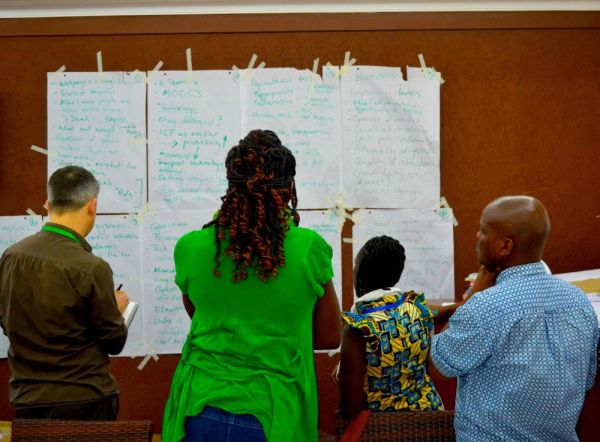
Walls surrounding the conference room became a collage of urban planning ideas. Photo credit: Sam Sturgis
Similarly, during the workshop’s introductions, a participant explained, “I’ve lived in the informal sector for all my life and I’m telling you, informal and formal work together…You can’t live without the informal in Nairobi.” For a workshop aimed at analyzing the relationship between Nairobi’s informal and formal sectors – and how that relationship is set to change in the future – contributions from an individual like this were vital. A former matatu driver – Nairobi’s reliable, largely informal form of public transportation – he now works with a community lending program that offers credit opportunities outside of the formal banking sector.
Utilizing the ideas and experiences of these participants, the workshop’s conference room quickly emerged as a makeshift think tank; large sheets of white easel paper covered the walls, each listing the numerous factors that workshop participants had determined will shape the informal future of Nairobi: Expression of youth, stability, waste management, transparency. The walls read like a wish list from Nairobi’s informal workers and residents.
So now the discussion has begun. Many of those who attended the workshop have lived in areas where toilets and education are as hard to come by as consistent employment. Others have dedicated their lives to strengthening the city’s informal sectors so that they contribute to the long-term development of the city. But all were clearly dedicated to a better future Nairobi.
“I’m thinking about 2040 now,” said one university student at the conclusion of the workshops. “It’s not just me — it’s future generations that will be impacted.”



